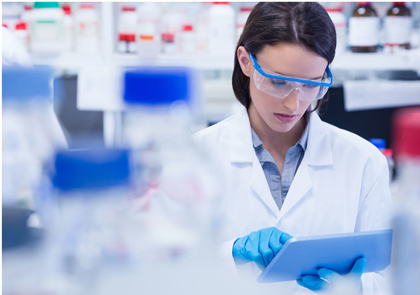How to comply Data Integrity with simple instruments

After a Data Integrity assessment in the laboratories, the work ends with a remedial plan.
One of the most difficult types of systems to be put in compliance are simple tools, such as scales, pH meters, conductivity meters, etc.
 For these tools, the guidelines consider acceptable that the data are printed on a receipt (static format), but recommend that the metadata, such as date and time and the identifier of the instrument, are also printed. Then the analyst must write down the reference to the sample, sign the print and fix it in his notebook or analytical sheet.
For these tools, the guidelines consider acceptable that the data are printed on a receipt (static format), but recommend that the metadata, such as date and time and the identifier of the instrument, are also printed. Then the analyst must write down the reference to the sample, sign the print and fix it in his notebook or analytical sheet.
As a result, the date and time of the instrument must be synchronized and locked. Unfortunately, not all the tools have a password to limit the modification of date and time to an independent user. In this case, it is possible to replace the instrument with one protected by a password. It is an expensive solution. Even if renewing the tools is desirable, it is not always affordable or not for all instruments at the same time. However, even in the case of tools with a password, it is costly to manage these passwords procedurally and to synchronize the time (at least twice per year in order to switch to and from daylight saving time). Last but not least, it is time-consuming to attach the paper receipt (or any photocopies in case of thermal paper). This is an important inefficiency factor that could benefit from a paperless solution.
An alternative solution is a “middleware” like the Inpharmatic Integration of instruments (Ioi). This software is a sort of “wrapper” that adds-on to the measuring instrument taking care of the measurement metadata such as sample-id, date-time, operator identity, electronic signature (where applicable) …
From a practical viewpoint the operator, by means of a tablet, can:
• Authenticate (also using the credentials of the company network)
• Read the sample number through a barcode or data matrix;
• Read automatically the measurement from the instrument;
• Sign electronically (where applicable)
• Take date and time automatically from the network
All these information are recorded in a secure DataBase (SQL), in full compliance with Data Integrity and without any paperwork to store the raw data.
At this point, we have two possible scenarios: the paper-based and the paperless ones
In a paper-based lab scenario, data can be printed in summary reports: by batch, by analysts, by instrument, … The Instrument log book can be automatically generated too.
In a paperless lab scenario, as suggested by the name “middleware” the measurements can be transferred to a LIMS (Laboratory Information Management System), or an ELN (Electronic Laboratory Notebook) making the management of these measures completely paperless. In this scenario, Ioi can also act as a Smart Gateway by providing a single point of interface to several instruments by taking care of the communication to different instruments of different suppliers (the only requirements for the measuring instruments is the possibility to interface to a printer).
Over 5 instruments, it may be convenient to go for the implementation of an Ioi middleware
Other advantages of this software, whether it is connected to a LIMS or not, is that it reduces administrative tasks. In fact, they have centralized access management, which can be associated with company network security. And, as anticipated, it does not require date and time synchronization, since it is automatically synchronized with the company network.
In conclusion, as a rough estimation, if the number of simple instruments to be put in compliance is lower than 5, their compliance by procedural management is sustainable, over 5 it may be convenient the implementation of the Ioi middleware.
Latest Posts
Key Topics of the PLA2024India
PLA2024India, 5th edition, promises a programme full of interactions and discussions. 4 focused sessions and 2 training workshops The main theme of #P
14 May 2024
Press Release: PLA® Conferences to partner with IA-Meetings for its 5th Indian Edition.
The Paperless Lab Academy® (PLA) is a leading conference about digital transformation of laboratory and quality processes. Above all, it is about mas
08 April 2024
The #PLA2024Europe programme aimed to highlight the importance of the human factor in digital transformation with several presentations and panel disc
19 March 2024

